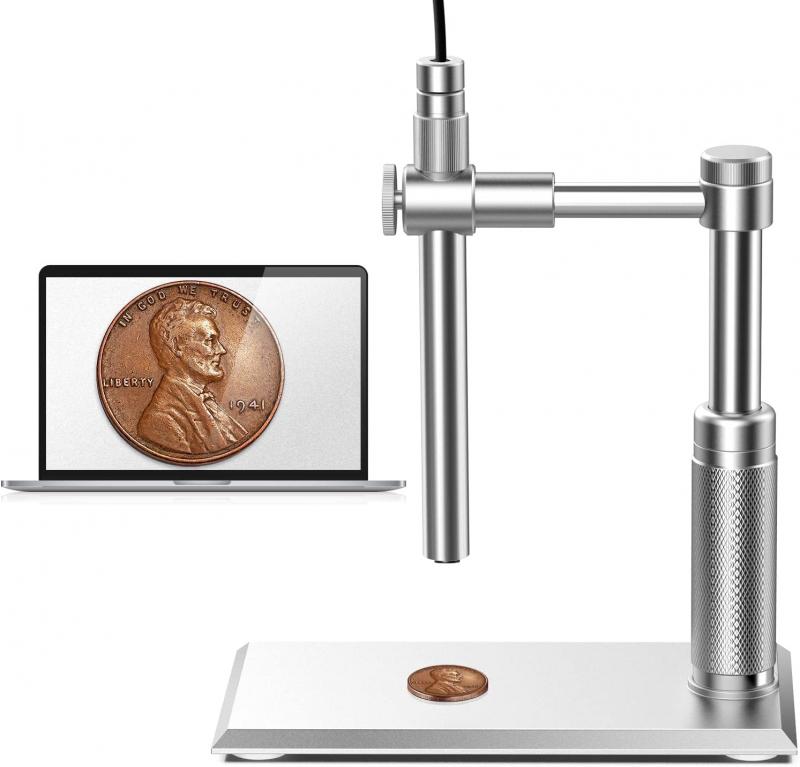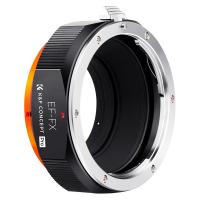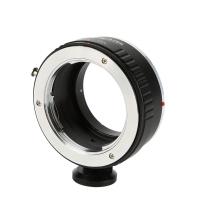What Is A Photo Microscope ?
A photo microscope, also known as a photomicroscope, is a specialized type of microscope that is designed for capturing high-quality photographs or images of microscopic specimens. It combines the functions of a microscope and a camera, allowing users to observe and document microscopic details with precision. Photo microscopes typically have a built-in camera or an attachment that enables the direct capture of images through the microscope's optics. These microscopes are commonly used in scientific research, medical laboratories, and educational settings, where the visualization and documentation of microscopic structures are essential. The images obtained from a photo microscope can be used for analysis, research, publication, or educational purposes.
1、 Definition and Function of a Photo Microscope
A photo microscope, also known as a photomicroscope, is a specialized microscope that is designed to capture high-resolution images of microscopic specimens. It combines the functions of a microscope and a camera, allowing scientists and researchers to document and analyze microscopic structures with great detail.
The main function of a photo microscope is to magnify tiny objects that are not visible to the naked eye and capture their images. It consists of an optical system that includes lenses, an eyepiece, and a camera attachment. The camera attachment can be either a film camera or a digital camera, depending on the model.
The photo microscope enables scientists to study and document various specimens, such as cells, tissues, bacteria, and other microorganisms. It is widely used in fields like biology, medicine, forensics, and materials science. By capturing detailed images, researchers can observe and analyze the structure, composition, and behavior of microscopic samples.
In recent years, advancements in technology have led to the development of digital photo microscopes. These microscopes are equipped with digital cameras that can directly capture images and display them on a computer screen. This allows for real-time observation and analysis, as well as easy storage and sharing of images.
Furthermore, some modern photo microscopes are equipped with additional features like fluorescence imaging, which allows for the visualization of specific molecules or structures within a sample. This technique has revolutionized fields like molecular biology and biomedical research.
In conclusion, a photo microscope is a powerful tool that combines the functions of a microscope and a camera to capture high-resolution images of microscopic specimens. It plays a crucial role in scientific research, enabling scientists to study and document the intricate details of the microscopic world.

2、 Components and Parts of a Photo Microscope
A photo microscope, also known as a photomicroscope, is a specialized microscope that is designed to capture high-resolution images of microscopic specimens. It combines the functions of a microscope and a camera, allowing researchers and scientists to document and analyze microscopic structures with precision.
The main components of a photo microscope include an optical system, a camera, and a light source. The optical system consists of lenses and mirrors that magnify the specimen and direct the light onto the camera. The camera, typically a digital camera, captures the image of the specimen and converts it into a digital format. The light source provides illumination for the specimen, ensuring clear and detailed images.
In addition to these basic components, modern photo microscopes may also include advanced features such as motorized stages for precise specimen positioning, autofocus systems for quick and accurate focusing, and software for image analysis and manipulation. These advancements have greatly improved the efficiency and accuracy of microscopic imaging.
From the latest point of view, photo microscopes have seen significant advancements in recent years. The integration of digital imaging technology has revolutionized the field, allowing for faster and more accurate image capture and analysis. High-resolution cameras and advanced software have made it possible to capture detailed images of microscopic structures with exceptional clarity.
Furthermore, the development of fluorescence microscopy techniques has expanded the capabilities of photo microscopes. Fluorescence microscopy allows researchers to visualize specific molecules or structures within a specimen by labeling them with fluorescent dyes. This technique has opened up new avenues for studying cellular processes and disease mechanisms.
Overall, a photo microscope is an essential tool in the field of microscopy, enabling researchers to capture and analyze microscopic structures with precision. The continuous advancements in technology are further enhancing the capabilities of photo microscopes, making them indispensable in various scientific disciplines.

3、 Principles and Techniques of Photo Microscopy
A photo microscope, also known as a photomicroscope, is a specialized microscope that is designed to capture high-resolution images of microscopic specimens. It combines the principles of microscopy and photography to produce detailed photographs of tiny objects that are not visible to the naked eye.
The main principle behind a photo microscope is the use of a camera attachment that is connected to the microscope. This attachment allows the user to capture images of the specimen that is being observed under the microscope. The camera attachment is typically equipped with a high-resolution digital camera or a film camera, depending on the model.
The technique of photo microscopy involves adjusting the lighting, focus, and magnification of the microscope to obtain the best possible image. The lighting is crucial in order to illuminate the specimen properly and highlight its features. The focus is adjusted to ensure that the image is sharp and clear, while the magnification is adjusted to capture the desired level of detail.
In recent years, there have been advancements in photo microscopy techniques. For example, the development of digital cameras has made it easier to capture and store images. Additionally, software programs have been developed to enhance and analyze the images obtained through photo microscopy. These advancements have improved the accuracy and efficiency of photo microscopy, making it an essential tool in various scientific fields such as biology, medicine, and materials science.
In conclusion, a photo microscope is a powerful tool that combines the principles of microscopy and photography to capture high-resolution images of microscopic specimens. It allows scientists and researchers to study and analyze tiny objects in great detail, providing valuable insights into various scientific disciplines.

4、 Applications and Uses of Photo Microscopes
A photo microscope, also known as a photomicroscope, is a specialized microscope that is equipped with a camera or imaging system to capture high-resolution images of microscopic specimens. It combines the capabilities of a microscope and a camera to allow for detailed examination and documentation of tiny structures and organisms.
The main purpose of a photo microscope is to capture images of microscopic specimens for various applications. These include scientific research, medical diagnostics, education, and industrial quality control. By capturing images, scientists and researchers can study and analyze the morphology, structure, and behavior of microscopic samples.
In scientific research, photo microscopes are used to study cells, tissues, and microorganisms. They enable researchers to observe and document the intricate details of these specimens, aiding in the understanding of biological processes and disease mechanisms. In medical diagnostics, photo microscopes are used to examine blood samples, tissue biopsies, and other specimens to detect abnormalities and diagnose diseases.
In education, photo microscopes are valuable tools for teaching and learning. They allow students to visualize and explore the microscopic world, enhancing their understanding of biological concepts. Photo microscopes are also used in industrial settings for quality control purposes. They enable manufacturers to inspect and analyze the quality of materials, components, and products at a microscopic level.
The latest advancements in photo microscopy technology have led to the development of digital imaging systems. These systems offer higher resolution, faster image acquisition, and advanced image processing capabilities. They also allow for real-time imaging and remote viewing, enabling collaboration and sharing of microscopic images across different locations.
In conclusion, a photo microscope is a powerful tool that combines the capabilities of a microscope and a camera to capture high-resolution images of microscopic specimens. Its applications and uses span across scientific research, medical diagnostics, education, and industrial quality control. The latest advancements in photo microscopy technology have further enhanced its capabilities, making it an indispensable tool in various fields.



























